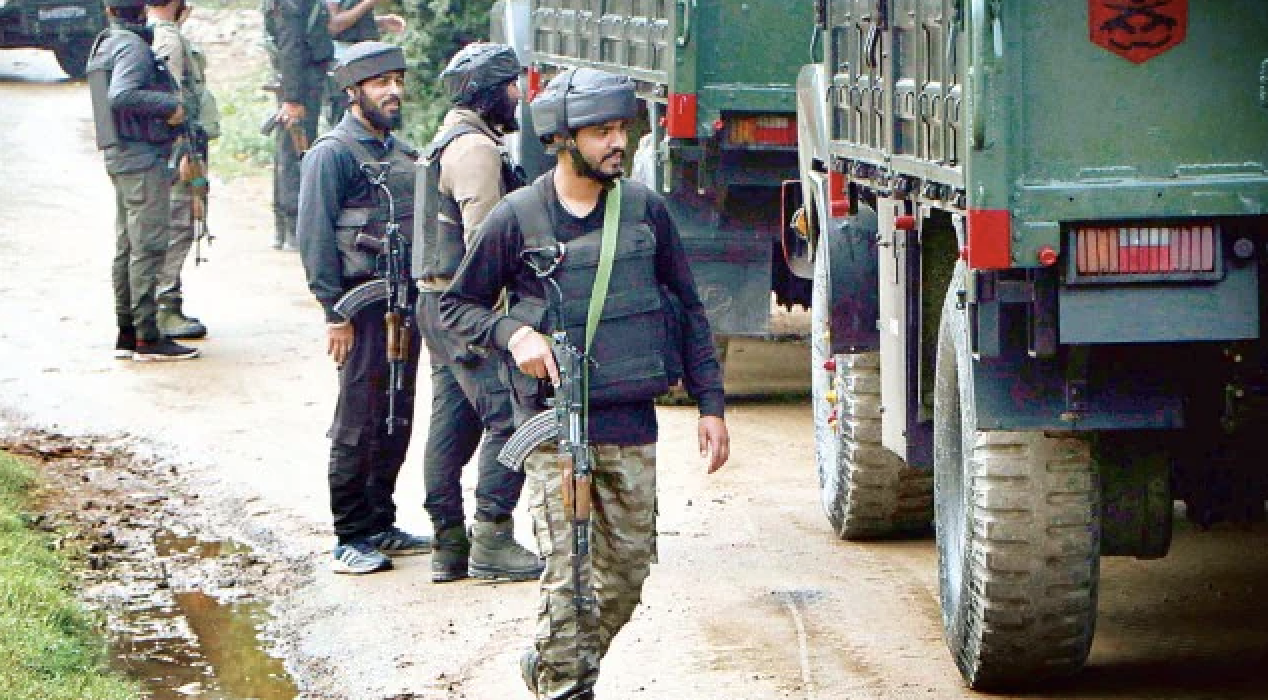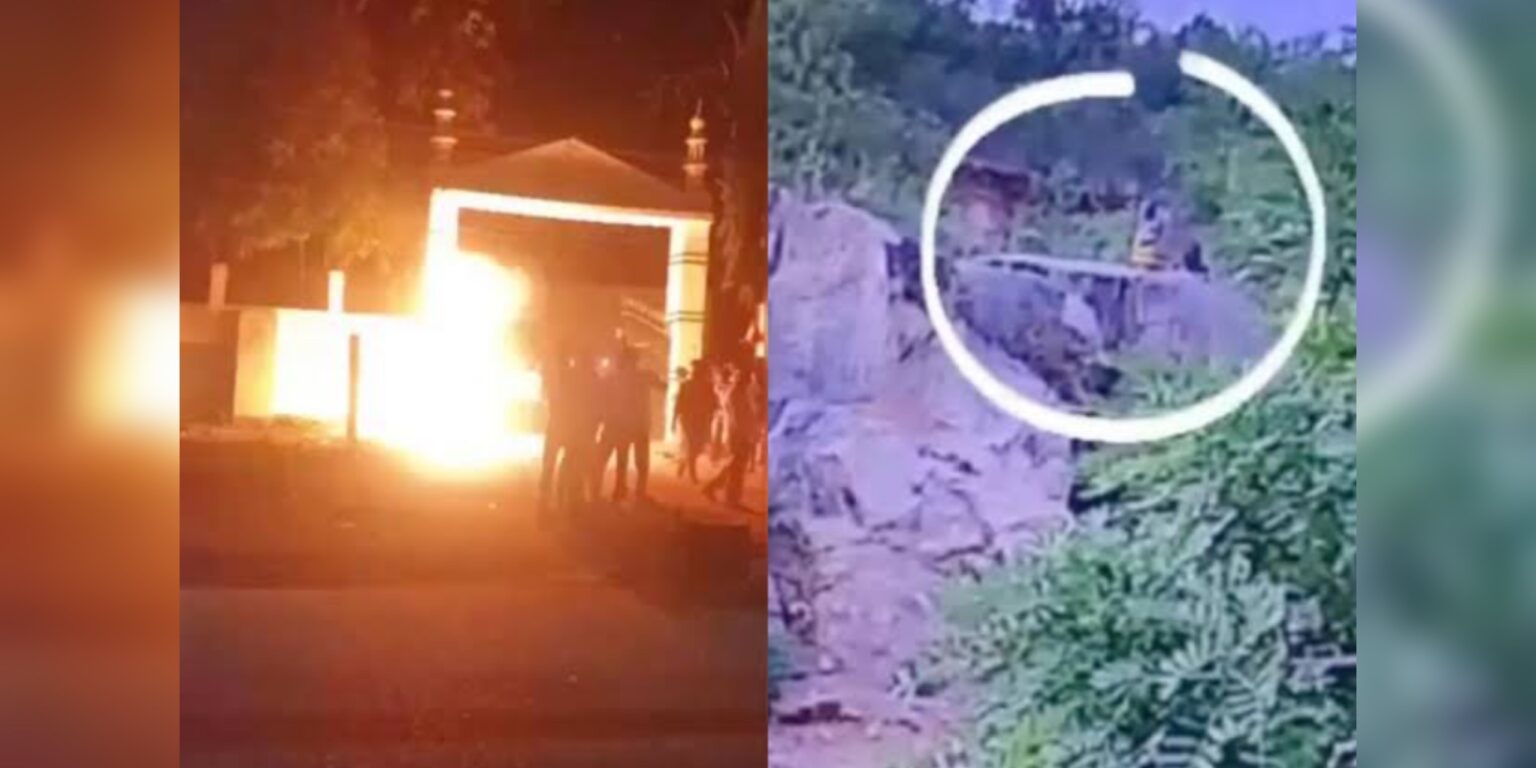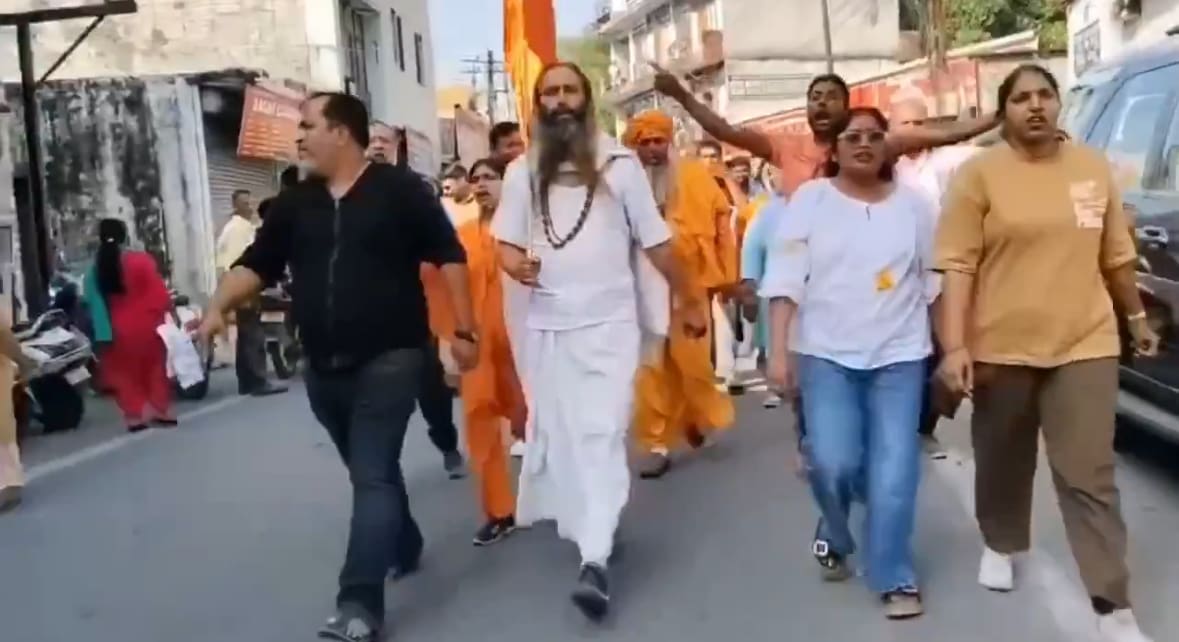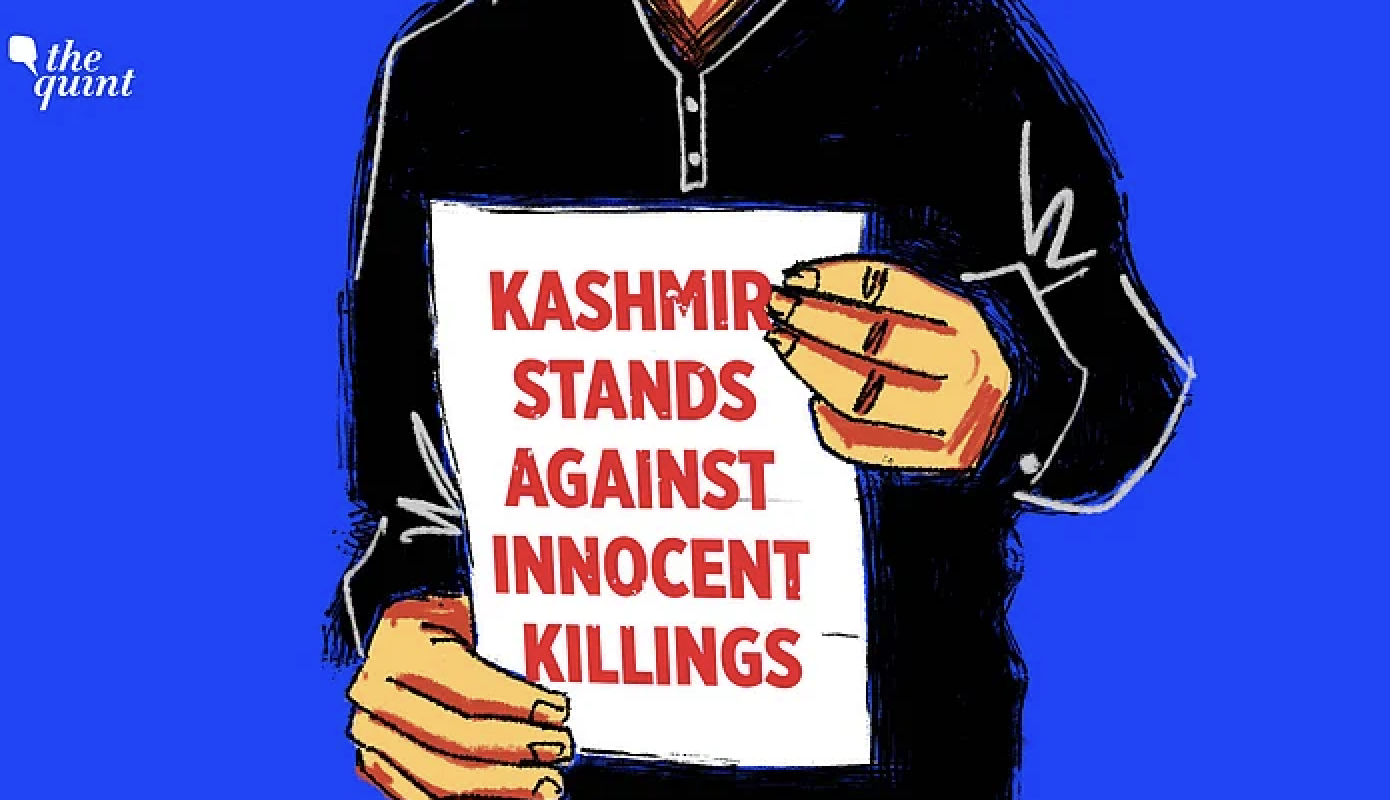
By Pamela Philipose / The Wire
Adopting cricketing parlance, Prime Minister Narendra Modi in a recent election speech in Uttar Pradesh (UP) claimed that his party was poised to hit a four, a chauka or boundary: first it was the 2014 general election, then the 2017 victory in the UP assembly poll, followed by the 2019 general election win, and now a 2022 triumph is almost in the bag.
This ‘chauka’ analogy has been used by other leaders earlier – today’s election spiel is invariably crafted in some IT backroom and passed on like a virus from leader to leader; teleprompter to teleprompter. But shorn of its braggadocio, the observation reveals not just the absolute criticality of UP to the BJP dream of permanent political suzerainty over the country, but a lurking anxiety that that the ball headed to the boundary amidst the deafening applause generated from a thousand television studios may land short; or, horror of horrors, fall into the waiting hands of a dexterous fielder.
In the nearly eight years since 2014, the BJP systematically set out to achieve two central objectives: consistent aggregation and expansion of its media presence and the normalisation of its politics of hatred for the Muslim Other. It is through the control of the media that the party has been able to amplify and systematise what Thomas Blom Hansen, professor of anthropology at the University of Stanford, describes as a “a longer-standing trend towards accepting public anger, and collective violence, (as) a legitimate means of political expression and legitimate means of exercising political power”.
Election reportage, even by more independent entities, have never sufficiently reflected upon the fact that this UP election is taking place under the shadow of genocidal calls (‘Hindutva Leaders at Haridwar Event Call for Muslim Genocide’, December 2021). There was some public outrage and a few desultory arrests after the Haridwar Dharma Sansad where the calls were made, but it was generally framed, by both the media and BJP sympathizers, as the brain child of a few nutters within the Hindu extreme right wing and generally overlooked.
Yet the fact remains that the UP election came to be notified a little less than a month after those murderous, anti-Muslim battle cries and they, in turn, have had their resonances in this election campaign.
Before we examine this more closely, let’s take a quick look at the changes that have taken place in terms of media use between the last UP assembly election and this one.
In 2017 there was the concerted use of WhatsApp for the first time, and great amplification of Twitter and Facebook use. In 2022, Instagram became part of the mix given the importance of the youth and first-time-voters for the party. Conspicuously, though, while platforms are being shuffled around, the content remains as toxic as ever. The Wire article, ‘UP Polls: Students, Political Parties Take On BJP With Puns, Hashtags, Memes and Spoofs’ (February 3), notes the regular use of “issues such as cow slaughter and ‘love jihad’” which are then shared through WhatsApp, Twitter, Facebook and Instagram.
The BJP, incidentally, has several accounts on Instagram given its ambition to bag first-time voters and the youth segment in general. Apart from the mother ship – bjp4India – with its 4.3 million followers, there are specific state-level accounts including in the states facing elections this time: bjp4UP has 155,000 followers; bjp4UK 19,500; bjp4goa 14,700; bjp4punjab 12,600; and bjp4manipur 1000.
Taken together, they constitute the party’s new media capillaries functioning much like they do within the human body – circulating material, often vicious visual stuff, in ever expanding spaces within civil society.
Any conflict from any part of the country that had a communal knife edge to it was promptly co-opted by the BJP’s election machine. Consider the manner the sentencing of the convicts in the Ahmedabad serial blasts case was exploited. Dating back to a 2008 case, this judgement handed the death sentence to 38 Muslim men. The large number was itself unprecedented, making a mockery of the Supreme Court’s “rarest of rare” guideline for the award of capital punishment (the Mumbai blasts of 1993 saw two being given death) – but the celebratory manner with which the verdict was received was particularly bizarre and decidedly genocidal in intent.
As The Wire piece ‘For the BJP, the Muslim is Not Just the Message, It is the Only Message’ (February 22) noted, the verdict came “by marvellous happenstance…in the middle of election”. The surmise that the timing of the verdict was the result of careful strategising gained ground when a particularly odious cartoon put out by the BJP’s Gujarat unit on its Twitter handle was circulated widely before being quietly dropped by the platform. (Incidentally, this image continues to figure in media platforms, including on The Wire and should be taken down).
Before long the serial blasts became a familiar theme in prime-ministerial election speeches (‘With BJP Facing the Heat in UP, Modi and Crew Pull Out Anti-Muslim Playbook’, February 22).
Modi used it as a way of warning voters that voting in the Samajwadi Party would be a surefire invitation to terrorists to wreak havoc. He wondered aloud why many of the bombs in the serial blasts were planted on cycles, following it up with the sly query, “Have you seen the poll symbol of the SP?” This is a master class in the power of suggestion, if ever there was one.
The hijab ban controversy roiling distant Karnataka was made to travel across half the length of the country at lightning speed to stir up the BJP campaign cauldron in UP. Posters of Harsha, the Bajrang Dal firebrand, who was knifed to death on February 20 in Shivamogga, now began to appear on its social media sites.
On February 21, for instance, a BJP acolyte tweeted a poster of Harsha smiling out of the frame with the skewed text: “I am Harsha I was killed by an Islamic mob because I demanded uniform rules for people irrespective of religion at educational institutions.”
Once again both Modi and UP chief minister Adityanath, capitalised on the hijab issue, speaking time and again about how deeply they cared for the “freedom” of Muslim woman and how their rivals failed to do so because they didn’t want to alienate their Muslim “vote banks”. Forgotten in this expedient claim-making was the fact that just 24 months earlier both men were viciously attacking those who were protesting the Citizenship Amendment Act, a great number of whom happened to be Muslim women.
Adityanath was so carried away by his alleged concern for Muslim woman that he even slipped in a repulsive anti-Muslim slur during an interview with Aaj Tak interlocutor, Anjana Om Kashyap. While he carried on speaking as if bandying such words was acceptable practice for the chief minister of India’s largest state, Kashyap known for her acidic take downs of less significant mortals, meekly let it pass.
With the big guys in field deploying expletives to define a community, the smaller leaders way down the party’s food chain had a field day threatening to bulldoze the homes of those who do not vote for the BJP, break their bones or tear off their beards (‘As UP Polls Continue, BJP MLAs Dial Up Anti-Muslim Hate Speeches’, February 18).
They spewed their venom with near complete impunity apart from an occasional rap on the knuckles by a now familiarly dormant Election Commission of India.
In an interview to The Wire, Gregory Stanton, founding president of Genocide Watch, talks about the ten processes of genocide (‘Full Text | As PM, Modi Has a Moral Obligation To Denounce Hate Speech: Gregory Stanton’, January 21). The first of these processes which could eventually lead to situations of genocide is when people are classified in a harmful way so that an entire group is rendered as aliens.
There are many concerned Indians who are witnessing with great trepidation their leaders pushing the country “down this horrific path of hate, fear and blood” (‘Is India Lurching Into a Genocide?’, February 18). In contrast to this is the silence of Big Media over the drip-feed of genocidal hate.
By maintaining their silence they are letting down both their professional calling and a country called India.
Defamation as a tool
It is shocking to learn that Bharat Biotech, instead of defending its record publicly, has taken recourse to defamation charges in order to silence The Wire through an ex-parte court order. Shocking too was the way this was done without any notice being served on its founder editors.
Many news organisations in India have had their brushes with such defamation bullies. The case of the Rajasthan Patrika bears repetition: In 2004, the newspaper ran a series on the harms caused by pesticides and it provoked a body of pesticide manufacturers, Crop Care Federation of India, to sue the newspaper for Rs 50 lakh.
But it had an unintended but important impact.
Delhi High Court’s Justice S. Ravindra Bhat delivered a great verdict recognising that such law suits are “intended to censor, intimidate and silence critics by burdening them with the cost of a legal defence until they abandon their criticism or opposition…In such instances the plaintiff’s goals are accomplished if the defendant succumbs to fear, intimidation, mounting legal costs or simple exhaustion and abandons the criticism.”
Well, in this instance, the editors of The Wire have made it clear that they will legally challenge the Bharat Biotech order, should it be properly notified and served on them (‘The Wire’s Statement on Reports of Telangana Court’s Ex-Parte Take Down Order of Articles on Bharat Biotech’, February 24).
There are many who see this move as a low blow. This, for instance, was a tweet from Praveen Gopal Krishnan: “The Wire’s coverage on Bharat Biotech has been an act of incredible, award-winning science-backed journalism. We owe them a debt of gratitude for the questions they raised. Instead what they received was an order to take them down, which came to their attention via a law blog.”
‘Hate Speech Beda’
This column has often argued that ordinary, and invariably silent, citizens of the country – who are sometimes referred to as constituting civil society – must speak out when conflicts like the hijab ban are deliberately created for political dividends. It was heartening therefore to learn about the emergence of ‘Hate Speech Beda’ (HSB), a civic forum against hate speech and acts, as a response to the madness currently gripping the state.
One of the areas this group has turned its attention to is the nature of media coverage of the entire hijab issue. The manner in which mediapersons descended on hijab-wearing students on February 15, once classes resumed after the three-day hiatus caused by the unrest, created widespread outrage.
Members of HSB then decided to personally meet the editors of Asianet Suvarna, one of the offending television channels. It reported back that Abhinandan and Ajith Hanamakkanavar, the channel’s input editor and head, News and Programs, respectively, expressed regret over the conduct of their reporters and undertook to ensure that they will not resort to such offensive behaviour in future. The story did not end there.
Aliya Assadi, a student petitioner filed a police complaint in Udipi district against an Asia Survarna News correspondent barging into her home, and an FIR has been filed against the reporter of Asianet Suvarna for breach of her privacy. It was, supposedly, a “sting operation”.
These developments flag the importance of civic response. If enough people are gripped by a similar drive for media accountability, we may actually see some difference to the feral reportage of some media outlets on a wide range of issues that has been on view recently.
Glorious history of Patna High Court besmirched
Dharnidhar Jha, a former Judge of the Patna High court, sent in an angry mail (excerpted):
“The notice issued by the office of the dist judge, Huzur, to judicial officers and staff posted with them to clean a temple situated by the side of Circuit House, Buxur, as per the direction of the Chief Justice, Patna High Court has engaged the attention of all sensitive and right thinking people almost across India. The order dated 6.01.2022 was withdrawn on 10.01.2022 as reported by some of the news papers including The Wire (‘Buxar Court Asks Staffers To Clean Temples, Falsely Claims Patna HC Chief Justice Ordered It’, January 12). But by that time the humiliation of Judges and employees of Buxur Courts was complete.
“You have attempted to defend a thoroughly illegal and unconstitutional action of the CJ, Patna by quoting a certain Tiwari, an employee of the court. While so doing you appear to deliberately have suppressed the most important aspect of the episode. No district judge could dare misquote the CJ in any order or notice if he had not been asked to do. In fact your news analysis contains the photograph of the poor employees who were treated as sweepers and bonded labourers by the CJ. That makes it a hollow and unacceptable claim that the order/notice was recalled by DJ, Buxur.
“Patna High court is over a hundred years old with the best of procedures and practices. It has its own special place of respect among the High Courts. Unfortunately, the present CJ doesn’t seem to have any respect for any aspect of the Court and its administration. The Principal Judges’ court in most stations in Bihar is lying vacant. But nothing has been done.
“Your attempt to create alibi for the CJ, Patna, only lowered the image of your platform.”
Wasted opportunities
Anil G. Sanji writes in from Bengaluru:
“Can critics tell me why 30 per cent of the Indian population (approx 400 million, more than the population of Europe or the USA) live below the poverty line even after 70 plus years of Independence, why our then leaders after winning freedom did not invest in building schools and colleges in every district with compulsory education for all, They should have built rail/road networks across India; built hospitals and medical colleges in every district; provided electricity to every part of India; focused on agriculture for food security. Instead we got nepotism and corruption so that political parties could stay in power. In the process, they defeated the very purpose of the independence movement. We were only 30 crore when we got our Independence, today we are 135-140 crore. We should have been one of the most developed nations in the world. Instead we find ourselves in an abyss.”
What about Lord Shiva as Mahakal Rupa?
Virendra Kumar Yadav writes:
“The Wire does nothing more than insult the Hindu faith and their divinities. Your article entitled. ‘How the Brahmin Conception of Leather as ‘Untouchable’ Segregated Dalits and Weakened India’ (December 21) indicates you negative mindset and attempts to encourage people to hate Hindus. Why have you never written anything about Swami Vivekananda, Maharana Pratap Singh, Prithviraj Chauhan, Hemu, Chandragupta Vikramaditya, and so on. You project Shiva in a certain light, but what about the omniscient Mahakal Rupa? You will never understand the Sanatan Dharma!”
Time to ‘Move On’
A carpenter and musician, Mistahi Corkill, sent in this powerful video from Ottawa, Canada:
“I have been following the struggle of the farmer of India for over the past year. I am thrilled that their determination and organising work forced the Modi government to announce a repeal of the three retrogressive farm laws. What an inspiration to the world! We can beat neo-liberalism and demand our own future! With deep gratitude and respect I send you my new music video called ‘Move On’, greatly inspired by the farmers of India! It is linked below. You will see that part of the first verse and the entire first chorus in the video shows scenes from their struggle. I wish all the success to our common effort to work in building a new society and world that is fit for human beings! Carry on the fight and defend your rights! The earth belongs to the farmers and workers! Salute!”
This article first appeared on thewire.in






